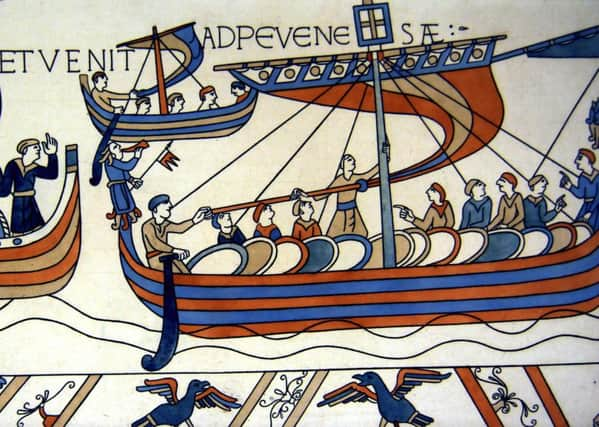What's new in Battle Museum


Date for the diary: there will be a talk on Tuesday 6 September, at 7.30 pm in the Main Hall, Battle Memorial Hall, on ‘Beyond the Bayeux Tapestry’ by Kate Russell and Tina Greene. Kate Russell, who organised the creation of the Alderney Tapestry, will discuss the background and techniques used to create this unique embroidery and Battle’s own Tina Greene will do the same for the Battle Community Tapestry. Tickets are £5 and are available from Battle Museum of Local History, the Crafty Norman, Farrago or the Battle Woolshop, as well as on the door on the evening. There will also be a chance to check on the progress of the Battle Community Tapestry – if you have not already done so, do go and contribute a stitch or two at the regular sessions on Thursdays and alternate Saturdays in the Almonry (no experience necessary – but experienced embroiderers welcome of course!).
The History Society is taking a holiday in August but will be beginning its 2016/17 season on Thursday 15 September, with a talk by Ruth Richardson on ‘Dickens and the Workhouse’ at 7.30 pm in the Wynne Room, Battle Memorial Hall. All welcome; non-members £4 on the door. If you are interested in joining the Society, you can contact the Membership Secretary by emailing [email protected] or come along on the night.
This month in 1066
Advertisement
Hide AdAdvertisement
Hide AdThe Chronicler, William of Poitiers, states that William had his ships and soldiers ready to go by the first week of August. Why did he not set sail then? It would be very difficult to keep such a large force idle in Normandy, both in terms of supplies and keeping up their morale. William managed to pull off this feat by making ample provision for his men and ensuring that they did not plunder the local area. However, he would surely have sailed as soon as possible if he could. Some think that he was waiting for Harold to disband his army but others think it was to do with unfavourable winds – this was a very common predicament.
Harold, meanwhile, kept his army assembled, with his headquarters on the Isle of Wight and thousands of men spread along the south coast in anticipation of invasion.
Harold Hardrada set sail around the end of August, with his wife and some of his children. The size of his fleet is not certain but even at its lowest estimate could have carried about 8,000 men. He is thought first to have gone to Shetland and then Orkney and then on down the coast to the River Tyne where he met up with King Harold’s brother, Tostig, and then made their way to the River Ouse and landed some 10miles south of their target, York.